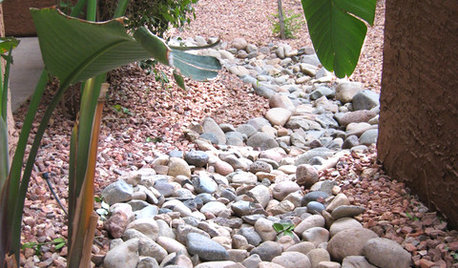How long for woodchips to decompose + lead question
laperouse
16 years ago
Featured Answer
Comments (28)
bob64
16 years agoalbert_135 39.17°N 119.76°W 4695ft.
16 years agoRelated Professionals
Owings Mills Landscape Architects & Landscape Designers · Cliffside Park Landscape Contractors · Doctor Phillips Landscape Contractors · Flagstaff Landscape Contractors · Framingham Landscape Contractors · Longview Landscape Contractors · New Providence Landscape Contractors · South Hackensack Landscape Contractors · Wentzville Landscape Contractors · Westchester Landscape Contractors · Cincinnati Decks, Patios & Outdoor Enclosures · Del Aire Decks, Patios & Outdoor Enclosures · Grafton Decks, Patios & Outdoor Enclosures · Reading Decks, Patios & Outdoor Enclosures · Truckee Decks, Patios & Outdoor Enclosureslaperouse
16 years agoBelgianpup
16 years agolaperouse
16 years agostoloniferous
16 years agobob64
16 years agoblutranes
16 years agomommyandme
16 years agoKimmsr
16 years agolaperouse
16 years agobluesky_girl
16 years agoadirondackgardener
16 years agoblutranes
16 years agoBelgianpup
16 years agoidaho_gardener
16 years agoblutranes
16 years agotoxcrusadr
16 years agolaughaha
16 years agoleslies
16 years agobob64
16 years agolaperouse
16 years agoLloyd
15 years agospace_turtle
15 years agoidaho_gardener
15 years agohelenh
15 years agotclynx
15 years ago
Related Stories

GARDENING AND LANDSCAPINGDry Riverbeds Solve Water Runoff
Spring rains don't have to lead to slides. Dry riverbeds redirect water runoff and add beauty to your landscape
Full Story
SAVING WATER11 Ways to Save Water at Home
Whether you live in a drought-stricken area or just want to help preserve a precious resource, here are things you can do to use less water
Full Story
GREEN BUILDINGGoing Solar at Home: Solar Panel Basics
Save money on electricity and reduce your carbon footprint by installing photovoltaic panels. This guide will help you get started
Full StoryGREEN BUILDING11 Reasons to Live in a House of Straw
Don’t be fooled by the old folk tale. Straw bales are a strong, functional and good-looking building material
Full Story
GARDENING GUIDESWhat Are Your Spring Gardening Plans?
Tearing out the lawn? Planting edibles? Starting from scratch? Tell us what you plan to change in your garden this year
Full Story
GARDENING GUIDESNew Ways to Think About All That Mulch in the Garden
Before you go making a mountain out of a mulch hill, learn the facts about what your plants and soil really want
Full Story
GARDENING GUIDESHow to Switch to an Organic Landscape Plan
Ditch the chemicals for a naturally beautiful lawn and garden, using living fertilizers and other nontoxic treatments
Full Story
FARM YOUR YARDHow to Get Good Soil for Your Edible Garden
The nutrients in your soil feed the plants that feed you. Here are tips on getting it right — just in time for planting season
Full Story
GREAT HOME PROJECTSHow to Give Your Driveway and Front Walk More Curb Appeal
Prevent injuries and tire damage while making a great first impression by replacing or repairing front paths
Full Story
LANDSCAPE DESIGNIs It Time to Consider Fake Grass?
With more realistic-looking options than ever, synthetic turf can be a boon. Find the benefits and an installation how-to here
Full Story






toxcrusadr